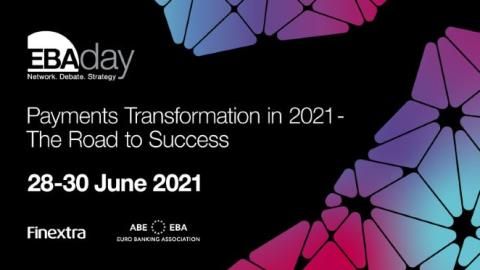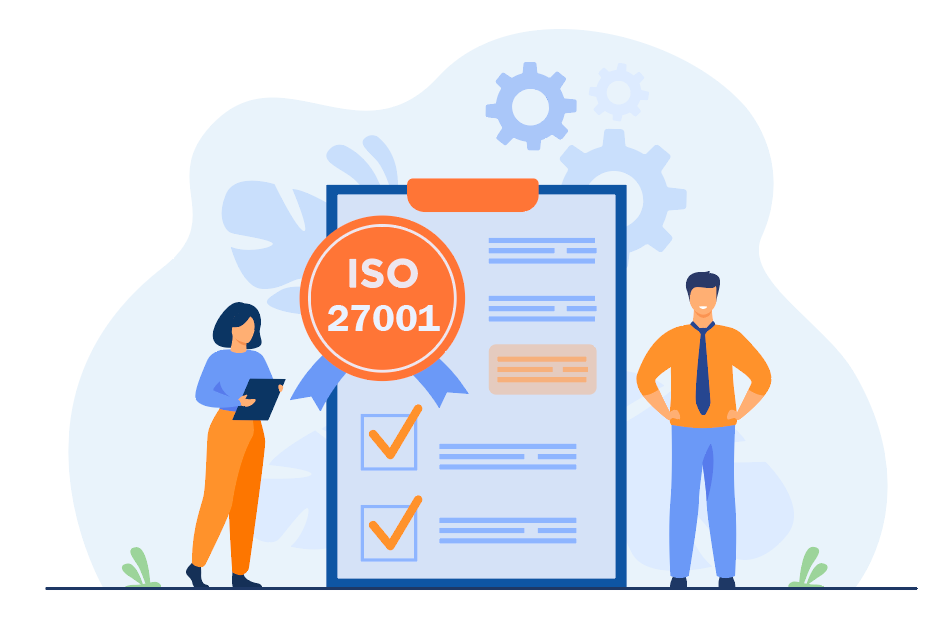Insights
A collection of our recent articles, white papers, webinars, reports and videos.
Nexi: here’s how we overcame the babel of account statement descriptions

Thanks to the Harmonizer Hub implemented by Mantica (TAS Group), Nexi PayTech has managed to harmonize into a single taxonomy all descriptions used by banks. A goal achieved through the use of Intelligent text mining and Machine learning technologies integrated in Nexi’s Active Gateway. Gianluca Finistauri of Nexi and Amedeo Borin of Mantica explain more about the initiative.

Wages, remunerations, emoluments: three different terminologies for the same identical statement. This is just one example of the wide variety of descriptions that banks use to report the same customer account transaction. An array of definitions that becomes a serious problem in the era of open banking and PSD2. In particular, but not only, for the Account Aggregation and Personal Financial Management (PFM) services, which allow the customer, with his consent, to have a clear vision of his finances at multiple banks, categorizing incomes and expenses with unique accounting definitions.
Nexi has managed to overcome this ambiguity by leveraging Intelligent machine learning and Text mining technologies that are at the basis of the Harmonizer Hub solution created by Mantica, TAS Group’s subsidiary specialized in these technologies.
Let’s unveil some key takeaways arising from the interview with 2 main actors of this successful project: Gianluca Finistauri, Head of Digital Corporate Banking of Nexi and Amedeo Borin, CEO of Mantica-TAS Group.
Reducing the complexity
“Active aggregation services are meant to descale complexity”, explains Finistauri. “But today it is still very hard to interface multiple banks to retrieve customer data, despite the PSD2 mandate acting as a fundamental aspect of open banking. In addition to carrying out the connection to all customer’s banks in a transparent way, Nexi has decided to take a step further and reduce the complexity of interpreting the contents. In fact, every single bank uses descriptions decided independently, as there is no standard in the banking industry for it, making it difficult to interpret them and, consequently, to be able to offer a clear view to the end customer. “We needed an engine capable of interpreting and ordering the collected descriptions, not really those of the large banking groups, with which we already collaborate through the Italian national corporate banking scheme CBI, but particularly those of the other 700 medium-small banks operating in Italy”, explains Finistauri.
This is where Mantica comes into play, offering a solution that is currently unique on the market, capable of bringing the babel of bank dialects back to a shared taxonomy. "By combining Intelligent text mining technology with Machine Learning algorithms, we were able to create an engine, the Harmonizer Hub, which dynamically analyses the enormous daily payment traffic of all banks, reconciling every single entry with a standard dictionary, and learning and improving performance day after day,” says Borin. “An absolutely not simple activity - he continues - because it involves interpreting natural language and analysing and comparing huge amounts of statements. And, moreover, because we had to respond to a new need driven by the PSD2 and therefore unprecedented to refer to. We took the challenge seriously, and quickly developed a system capable of giving very reliable answers that have been integrated by Nexi into its active gateway, which is already operational”.
A solution capable of managing millions of pieces of information
“We chose Mantica's solution after a careful software selection, which also involved international suppliers, and after a pilot that proved the excellent functioning of the technology on which Harmonizer Hub is based”, recalls Finistauri. A decision that turned out to be a winning one: “Today a customer of any of our banks - continues Finistauri - who has current accounts with multiple institutions that use different terminologies, can see all his expenses correctly classified. And the system is able to dynamically maintain this functionality updated over time, continuing to map every new description potentially introduced by future regulation, learning from the millions of transactions it analyses every day".
Mapping completed
The Harmonizer Hub is now close to automatically recognizing the totality of bank descriptions. "A great job has been done - Finistauri says satisfied - because at the beginning we were reconciling no more than 20% of the transaction descriptions and already in April we could match about 85% of the terminologies used by banks. Then, week after week, the engine learned to recognize and correctly catalogue more and more descriptions, effectively eliminating the need to intervene manually”.
The customer appreciation in all segments
“As of today, only Nexi offers such a service which is so accurate and continuously updated thanks to machine learning. – proudly underlines Finistauri - The market has immediately perceived the high quality of this new feature and we have received highly positive feedback from both end-customers and third-party operators who offer their PFM service based on our data aggregation. The latter type of customers need to have data already sorted and classified to better carry out their own analyses deep diving into the rest of the details of the statements".
But a great deal of attention, perhaps even exceeding expectations, came from our corporate customer base, which quickly began requesting it from their banks. “Little is said about it - explains Finistauri - but the PSD2 is also very important for corporates, who are natively multi-bank and have to manage the wide variance of the descriptions from bank to bank. With the Harmonizer Hub we have the ability to connect and harmonize corporate accounts, for example by managing collections through PISPs or feeding corporate treasury solutions for intraday balances. A more sophisticated value proposition compared to the one offered to retail customers, but one that we are able to provide in an equally reliable way".
Another aspect appreciated by Nexi is the ease with which the new service can be implemented by banks. “From the moment the request arrives - says Finistauri – our banks can activate it in about 4 weeks to their end customers. And this allows us to have a very good time-to-market ".
Ready to learn other languages
The engine created by Mantica is potentially capable of interpreting bank descriptions in other languages as well. Currently it is operational to manage Italian, but for Finistauri the opening to English, French, German etc. represents an obvious evolution considering Nexi's new international footprint deriving from the acquisitions of Nets and SIA which will lead the PayTech to interconnect with open banking gateways in other countries already by end of this year.
“The system is solid and the textual analysis and machine learning mechanisms have now been fully tested, so it won't be a problem to expand the linguistic base by retracing the steps taken to implement Italian,” confirms Borin.
Harmonizer Hub, not just for bank descriptions
The versatility of the engine made by Mantica allows its use also in other fields. Nexi is also using it to make some processes more efficient and faster, for example in order to understand whether a balance presented by the customer by a bank is the current Account Balance or the Available Balance. Furthermore, machine learning engines are very useful for customer profiling and to promote personalized offers, obviously always requiring the conscious consent of the customer. “We are starting to work in this direction because the demand from banks to use it as a tool to improve marketing campaigns is very strong”, confirms Finistauri. But the normalization of bank statements and payments is also important for credit scoring and behavioural analysis, helping to improve fraud detection and fraud management, because it makes it faster to intercept and analyze suspicious transactions.
Author: Flavio Padovan– Bancaforte (Italian version)
Source: Nexi: così abbiamo superato la babele delle causali bancarie
Global payments trends : TAS Group’s view

TAS Group at EBAday 2021

Milan, 28 June 2021 - TAS Group is excited to be again exhibiting at EBAday which goes live today. The event, curated by the Euro Banking Association’s subject matter experts and Finextra Research, is expected to be a hub of intense conversation and debate during these transformative times on the path to digitalization, with the banking community coming together digitally to make the decisions that will shape the future.
The key theme this year is Payments transformation in 2021 – The road to success, which ties in perfectly with TAS Group’s own mission. TAS has been working with major European banks and Industry bodies for over 35 years, helping them to transform and modernize their infrastructures, adapt to ever-changing regulations and streamline their processes to better serve their customers.
Having been among EBA’s Ecosystem Partners since over a decade, TAS Group is used contributing to the development of new collaborative ideas through the multi-stakeholder working groups led by the Euro Banking Association, and the annual EBAday event is the perfect venue to share the insights and enlarge the debate to over 2000 registered delegates.
We look forward to sharing our insights, offering solutions to today’s challenges and joining the conversation on the major topics addressed by the conference.
Delegates can talk to TAS experts at our virtual booth, discover the latest product innovations, receive a tailored demo, learn how to meet new requirements and stay relevant in a changing payments landscape. TAS payments specialists will be on hand to advise on key topics including Open Banking, ISO 20022 Migration, Instant Payments, Request to Pay, Intraday Liquidity, Correspondent Banking and Cloud Modernization.

Mario Mendia, SVP International Markets at TAS Group, will be taking part tomorrow in the panel session of Stream 2, starting at 11AM, titled: Payments in a real-time world – reality, future or utopia? Mario will give his view based on TAS's very unique PayFac experience in the market.
For more info visit our EBAday 2021 page
or go to our virtual booth.
TAS Group launches TAS Group Cloud Services

TAS Group invests in wearables fintech Flywallet

Milan (Italy), 22 June 2021– Flywallet S.r.l. (“Flywallet”), the innovative startup that created a digital platform for enabling payments and services through wearable devices with biometric authentication, has signed a reserved investment agreement for the entry of Global Payment S.p.A. (“GP”), a subsidiary of TAS Group’s mother company TAS S.p.A., into the capital with a minority stake.
TAS Group is a multinational company, whose payment software solutions are adopted by commercial and central banks throughout Europe and beyond. More than 100 million payment cards are managed by TAS platforms worldwide. Thanks to its leadership, TAS Group will be a vehicle to accelerate the go-to-market for Flywallet’s mobile wallet, the world’s first for tokenizing payment cards on wearables with biometric authentication. The partnership will also result in a commercial agreement under which GP will distribute Flywallet’s wearables and service platform to TAS Group's business customers.

Flywallet’s flagship product is named Keyble, a new type of wearable that adapts to the user’s lifestyle, created with eco-friendly materials and inspired by made-in-Italy styles. It consists of a smart device that can be inserted into fashion accessories such as bracelets or watch straps and is equipped with biometric sensors for user authentication and health monitoring.
Through fingerprints or heartbeat measured via ECG, the user can enable in-store contactless payments, passwordless logins to online services, ticketing, loyalty cards, access to gyms, offices and homes, car door locks, digital identity and more. In early 2022, the wearable will be certified as a medical device capable to perform analysis of cardiac arrhythmias, blood oxygen saturation and body temperature.
Flywallet is proposing a unique “Biometric Wearable Platform as a Service” model for e-money and payment institutions, banks, insurance companies and businesses. By connecting via dedicated APIs, the Flywallet Platform allows Partner companies to deliver new types of digital services easily and securely through the proprietary wearables.
Valentino Bravi, CEO of TAS stated: “At TAS, we have always applied the principles of “continuous innovation” to ensure the market a constant technological and functional evolution of our products and services, both through significant investments in R&D - more than 10% of our revenues in the last decade - and through the acquisition of innovative companies.
In 2019, for example, the acquisition of Mantica enabled us to expand our offerings in the Machine Learning and Artificial Intelligence areas.
Today, we are investing in Flywallet because we are convinced that offering wearable technology that is customizable and adaptable to our customers’ user experiences is a critical success factor.
We also appreciate that this project gives us the opportunity to reaffirm our decades-long commitment to promoting Italian technology in a sector that will undoubtedly improve our lives and make them more secure in the years to come.”
Lorenzo Frollini, Founder and CEO of Flywallet added: “It is an honour for Flywallet to count TAS among its shareholders and partners. Between TAS and Flywallet there is a perfect strategic fit and a total sharing of the company’s core values, including customer centricity and a relentless pursuit of service quality. In the medium term, the strategic partnership with TAS will also allow Flywallet to expand its range of services through the opportunities offered by PSD2.”
TAS Group: ISO 27001 certification acquired also for the parent company and the subsidiary Global Payments

How the T2-T2S Consolidation and Instant Payments will affect BCBS248

While the imminent deadline of the T2-T2S Consolidation project together with the SWIFT CBPR+ Project, have absorbed time and resources at the bank’s side, the impact they will have on Intraday liquidity management is also likely to be heavily felt. When BCBS248 was introduced back in 2013, it brought with it a new set of best practices for the monitoring and measuring of intraday liquidity, throwing the topic into sharp focus. Key improvements introduced included a better distribution of payment outflows as well as the re-design of all processes around data acquisition, reconciliation and bilateral agreements with respective correspondent banks. In other words, it was only relatively recently that banks have started assessing their intraday liquidity exposure and adjusted their internal workflows to maintain and optimise their Intraday liquidity buffers.
The first major step that introduced disruption to the bank’s data management was switching from EOD batch processes towards an intraday approach. Whilst real-time and intraday management were long known within RTGS systems, it changed Correspondent Banking relationships considerably, where the banks were used to receiving EOD statements on a daily/weekly basis.
A second major turning point was assessing what systems and what obligations were to be considered for the metrics calculations, generally linked to any ancillary system activity as well as fiscal related payments and CLS. While BCBS248 addresses the basic guidelines to be taken into consideration when calculating metrics, at a general level, much of the implementation is left to the individual bank’s interpretation. The ECB’s current developments and the systems centralisation processes (T2, T2S and TIPS), have opened new user interpretations with regards to what payments flows to include in the metrics calculation. Some banks have opted to include all ECB systems as a whole in their intraday buffer calculations. Other banks report only the RTGS activities and consider all other systems as ‘’ancillaries’’ that work independently for closing their position on the LVPS at the end of day (e.g. EURO1/T2S) without creating intraday liquidity exposures on the RTGS side.
The Basel Committee has been very clear in stating that metrics reporting should be performed on a LVPS system on a system and currency basis. Other LVPSs can be included in the same report provided that liquidity bridges exist with the main LVPS; where ancillary systems are concerned, there’s no need to report them individually as they settle on the LVPS during the selected operational windows.
One of the trends that has being observed during the assessments conducted in the pre T2-T2S Consolidation phase, is that banks are keen to move most of the retail payments towards clearing and/or IP services, reducing the liquidity impacts on the LVPS. As a result, a significant portion of liquidity will no longer be settled in the LVPS, but managed on separate systems/accounts.
With this upcoming new situation, we will be seeing the migration of a big chunk of liquidity toward non-LVPS related systems that are out of scope for the current BCBS248 scenarios.
Instant Payments, as we know, are independent from clearing and settlement mechanisms and don’t close their position on any existing LVPS. That means that they settle continuously and independently; in case of liquidity shortages or surpluses, it is possible to move funds in and out and measure them accordingly in the metrics calculations of the respective LVPS system (backed by collateralised capacity, typically held at the Central Bank).
The participation in the ECB Instant Payment System, TIPS, will become mandatory for all TARGET2 actors from November 2021, to encourage the usage of the platform and driving the change toward alternative and more cost-effective means of payment. Additionally, TIPS will become the main hub for all funding and defunding activities across all IP schemas, making liquidity available at any time through automated processes.
However, from a BCBS248 perspective, it will still be possible to measure funding and defunding transfers made from/to the RTGS system to/from the dedicated cash account in TIPS.
That said, IP statistics indicate a strong growth trend (one that varies across jurisdictions) mostly driven by individual banks expanding their product offerings as well as an acceleration in the digitalisation processes in the Covid era.
IP volumes are getting higher and will most likely replace the normal ACHs in the retail sector. This is not only driven by cost and efficiency benefits, but also to ensure settlement finality for high value payments. In TIPS all retail payments are eligible for settlement in central bank money, regardless of the amount. The general perception is that we will experience a gradual shift from an intraday liquidity monitoring approach towards a fully automated real-time control; liquidity exposures won’t stop overnight but will keep on running 24/7 in different currencies and systems as a result of interoperability initiatives across the globe.
Likewise, SEPA itself has started the migration process towards a Continuous Gross Settlement schema; banks will now be able to settle SEPA payments on a real-time basis but still outside the LVPS settlement windows. Banks have been used to knowing exactly at what time during the day to expect each settlement, while in a continuous gross settlement environment, batches will be settled on separate technical accounts where liquidity needs to be available at selected ‘’intervals’’ if needed.
Tracking what used to be considered as a ‘’timed obligation’’ on an intraday basis is now opening different views and interpretations. Unless formally stated as part of a regulatory update, the reporting of IP activities and SEPA Continuous Gross Settlement will be both left out of the liquidity metrics as they run independently of the LVPS without creating daily exposures.
Whilst SEPA real-time settlement is still subject to the Bank’s input, IPs will be operating outside normal business hours; the current Intraday throughput takes into consideration the standard day window going from 8:00 to 18:00; whilst banks should now get familiar with measuring liquidity on a 24-hour basis.
The ISO20022 migration facilitates the management of data since a single format (both for payments and for SCT/SCT-Inst) will ensure standardisation across the individual infrastructures. However, the key activities will be focused on implementing fully automated processes and integration supported by a robust infrastructure, (especially for re-balancing liquidity, alerting, and managing payments outflows). Investments should focus on expanding the data repository capacity and on interfacing each system to gather the data going in and out on a real-time basis and displaying it on user-friendly dashboards.
Re-designing the technology strategy will definitely play a key role as well as working together with the Risk Department to assess how payment behaviour will change from an intraday to a 24/7 perspective. With timed obligations and retail payments soon to be out of the LVPS picture, we will be seeing a gradual evolution of both Treasury and Risk, where liquidity will no longer be a monitoring task but rather play a strategic role.
At this stage banks should consider the following as immediate priorities:
Retail payments: these will be split between ACHs and IPs. Banks need to assess the funding activities on separate technical accounts. ECB cash accounts (TIPS) will be supported by CB collateral. However, all liquidity needs to be backed by fully automated processes
Engage in open dialogue with local regulators to assess if and how to report the IP activities in their intraday liquidity metrics calculations on a stand-alone basis as well as how to include the obligations settled on technical accounts
With the imminent Consolidation coming up, considering that TIPS will become the ‘’central connector’’ for all IP CSMs, are regulators expecting separate reports for each ECB system (RTGS+CLM, T2S and TIPS)?
Skilled staff and migration of competencies. With a gradual reduction in manual activities, staff will be required to learn how to leverage new technologies such as AI/ML/Predicative Analytics, and take advantage of powerful new tools that will likely be game changers for liquidity management optimization.
The T2-T2S Consolidation project is nevertheless a challenge that will mark the beginning of new standardised practises as well as a chance to review existing technology and systems, not to be missed.
Author: Alessandra Riccardi, Business Analyst CMT of TAS
How the T2-T2S Consolidation and Instant Payments will affect BCBS248

Author: Alessandra Riccardi (Business Analyst Capital Markets & Treasury - Tas Group)
While the imminent deadline of the T2-T2S Consolidation project together with the SWIFT CBPR+ Project, have absorbed time and resources at the bank’s side, the impact they will have on Intraday liquidity management is also likely to be heavily felt. When BCBS248 was introduced back in 2013, it brought with it a new set of best practices for the monitoring and measuring of intraday liquidity, throwing the topic into sharp focus. Key improvements introduced included a better distribution of payment outflows as well as the re-design of all processes around data acquisition, reconciliation and bilateral agreements with respective correspondent banks. In other words, it was only relatively recently that banks have started assessing their intraday liquidity exposure and adjusted their internal workflows to maintain and optimise their Intraday liquidity buffers.
The first major step that introduced disruption to the bank’s data management was switching from EOD batch processes towards an intraday approach. Whilst real-time and intraday management were long known within RTGS systems, it changed Correspondent Banking relationships considerably, where the banks were used to receiving EOD statements on a daily/weekly basis.
A second major turning point was assessing what systems and what obligations were to be considered for the metrics calculations, generally linked to any ancillary system activity as well as fiscal related payments and CLS. While BCBS248 addresses the basic guidelines to be taken into consideration when calculating metrics, at a general level, much of the implementation is left to the individual bank’s interpretation. The ECB’s current developments and the systems centralisation processes (T2, T2S and TIPS), have opened new user interpretations with regards to what payments flows to include in the metrics calculation. Some banks have opted to include all ECB systems as a whole in their intraday buffer calculations. Other banks report only the RTGS activities and consider all other systems as ‘’ancillaries’’ that work independently for closing their position on the LVPS at the end of day (e.g. EURO1/T2S) without creating intraday liquidity exposures on the RTGS side.
The Basel Committee has been very clear in stating that metrics reporting should be performed on a LVPS system on a system and currency basis. Other LVPSs can be included in the same report provided that liquidity bridges exist with the main LVPS; where ancillary systems are concerned, there’s no need to report them individually as they settle on the LVPS during the selected operational windows.
One of the trends that has being observed during the assessments conducted in the pre T2-T2S Consolidation phase, is that banks are keen to move most of the retail payments towards clearing and/or IP services, reducing the liquidity impacts on the LVPS. As a result, a significant portion of liquidity will no longer be settled in the LVPS, but managed on separate systems/accounts.
With this upcoming new situation, we will be seeing the migration of a big chunk of liquidity toward non-LVPS related systems that are out of scope for the current BCBS248 scenarios.
Instant Payments, as we know, are independent from clearing and settlement mechanisms and don’t close their position on any existing LVPS. That means that they settle continuously and independently; in case of liquidity shortages or surpluses, it is possible to move funds in and out and measure them accordingly in the metrics calculations of the respective LVPS system (backed by collateralised capacity, typically held at the Central Bank).
The participation in the ECB Instant Payment System, TIPS, will become mandatory for all TARGET2 actors from November 2021, to encourage the usage of the platform and driving the change toward alternative and more cost-effective means of payment. Additionally, TIPS will become the main hub for all funding and defunding activities across all IP schemas, making liquidity available at any time through automated processes.
However, from a BCBS248 perspective, it will still be possible to measure funding and defunding transfers made from/to the RTGS system to/from the dedicated cash account in TIPS.
That said, IP statistics indicate a strong growth trend (one that varies across jurisdictions) mostly driven by individual banks expanding their product offerings as well as an acceleration in the digitalisation processes in the Covid era.
IP volumes are getting higher and will most likely replace the normal ACHs in the retail sector. This is not only driven by cost and efficiency benefits, but also to ensure settlement finality for high value payments. In TIPS all retail payments are eligible for settlement in central bank money, regardless of the amount. The general perception is that we will experience a gradual shift from an intraday liquidity monitoring approach towards a fully automated real-time control; liquidity exposures won’t stop overnight but will keep on running 24/7 in different currencies and systems as a result of interoperability initiatives across the globe.
Likewise, SEPA itself has started the migration process towards a Continuous Gross Settlement schema; banks will now be able to settle SEPA payments on a real-time basis but still outside the LVPS settlement windows. Banks have been used to knowing exactly at what time during the day to expect each settlement, while in a continuous gross settlement environment, batches will be settled on separate technical accounts where liquidity needs to be available at selected ‘’intervals’’ if needed.
Tracking what used to be considered as a ‘’timed obligation’’ on an intraday basis is now opening different views and interpretations. Unless formally stated as part of a regulatory update, the reporting of IP activities and SEPA Continuous Gross Settlement will be both left out of the liquidity metrics as they run independently of the LVPS without creating daily exposures.
Whilst SEPA real-time settlement is still subject to the Bank’s input, IPs will be operating outside normal business hours; the current Intraday throughput takes into consideration the standard day window going from 8:00 to 18:00; whilst banks should now get familiar with measuring liquidity on a 24-hour basis.
The ISO20022 migration facilitates the management of data since a single format (both for payments and for SCT/SCT-Inst) will ensure standardisation across the individual infrastructures. However, the key activities will be focused on implementing fully automated processes and integration supported by a robust infrastructure, (especially for re-balancing liquidity, alerting, and managing payments outflows). Investments should focus on expanding the data repository capacity and on interfacing each system to gather the data going in and out on a real-time basis and displaying it on user-friendly dashboards.
Re-designing the technology strategy will definitely play a key role as well as working together with the Risk Department to assess how payment behaviour will change from an intraday to a 24/7 perspective. With timed obligations and retail payments soon to be out of the LVPS picture, we will be seeing a gradual evolution of both Treasury and Risk, where liquidity will no longer be a monitoring task but rather play a strategic role.
At this stage banks should consider the following as immediate priorities:
- Retail payments: these will be split between ACHs and IPs. Banks need to assess the funding activities on separate technical accounts. ECB cash accounts (TIPS) will be supported by CB collateral. However, all liquidity needs to be backed by fully automated processes
- Engage in open dialogue with local regulators to assess if and how to report the IP activities in their intraday liquidity metrics calculations on a stand-alone basis as well as how to include the obligations settled on technical accounts
- With the imminent Consolidation coming up, considering that TIPS will become the ‘’central connector’’ for all IP CSMs, are regulators expecting separate reports for each ECB system (RTGS+CLM, T2S and TIPS)?
Skilled staff and migration of competencies. With a gradual reduction in manual activities, staff will be required to learn how to leverage new technologies such as AI/ML/Predicative Analytics, and take advantage of powerful new tools that will likely be game changers for liquidity management optimization.
The T2-T2S Consolidation project is nevertheless a challenge that will mark the beginning of new standardised practises as well as a chance to review existing technology and systems, not to be missed.
Discover how TAS Group is helping banks with T2-T2S Consolidation and managing Intraday Liquidity
TAS Group Interim Management Report: all economic indicators show continued growth

Contact us
Get in touch to discover how we can help in achieving your business goals
